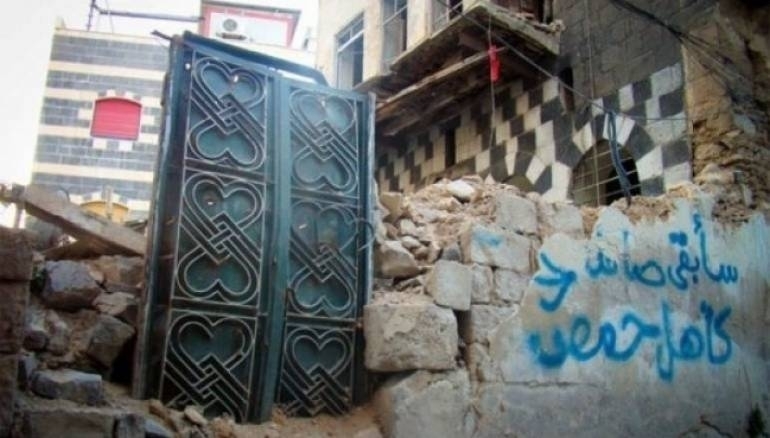Activists of Homs confirmed that dozens of archaeological buildings in the war-torn city have been looted since the Syrian revolution erupted.
Activists explained that regime militias robbed the sites in two ways: either by removing the unique stones from buildings to re-build in a different place, or by collecting the remaining stones of demolished houses as a result of shelling and bombing.
Abu Walid, an activist, reported that many people who returned to their houses to restore them found them empty of historical relics, with only ordinary stones of no archaeological value remaining.
“Sadly, the distinctive features of the Homsi houses – like pools, arches, fountains and colored marbled mosaics – have completely disappeared” the activist told Zaman al-Wasl.
Most black stones, a distinctive feature in Homs’ buildings, were transferred to Lebanon for use in constructing houses there, Abo Ra’afat, a builder from Homs claimed.
Abu Ra’afat confirmed to Zaman al-Wasl that he had built three houses within last five months in Zahle, Jounieh and Baabda, using stones transported from Homs, as many affluent people prefer the old ornate stones.
Abu Ra’afat also mentioned that Homs’ stones are transported to Europe and Australia for people interested in old Arabic architecture.
The builder mentioned that antique traders in Hezbollah’s southern suburbs of Beirut facilitate the transportation of Homs’ distinctive stones, especially for Lebanese emigrants.


